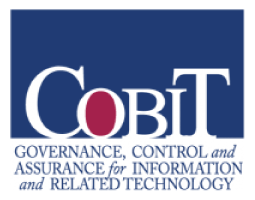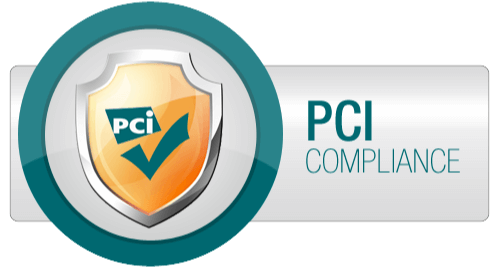Parent engagement in addressing challenging behavior across a variety of settings (e.g., school settings, community settings, in the home) is a critical component of meaningful, lasting, positive behavior change for learners. When parents and teachers collaborate on the development and implementation of positive behavior support strategies across the home and school settings students will benefit from the clear and consistent expectations. Parents can remain engaged in developing effective positive behavior support strategies for their children by collaborating with school team members during the assessment, development, and implementation of behavior support strategies across home and school settings.
1. Assessment: Evaluate and Complete the Picture
The first step is to identify “why” the challenging behavior is occurring. Is the child engaging in problem behavior to get attention, to get out of a task, or to gain access to a desired item or activity?
In a function-based behavior intervention plan, why a behavior is occurring is referred to as the function of the behavior. Parents often have valuable information to contribute when the function of the behavior is being assessed. For example, maybe there have been recent changes in medication that may be effecting behavior. Perhaps there has been a significant change at home such as a grandparent moving in or a favorite family member moving out.
Also, Parents can provide information on if the challenging behavior is happening in the home setting, what it looks like if it is happening at home, and if there are a pattern of events that take place to evoke the challenging behavior. Parent engagement during the assessment portion of behavior intervention planning can yield a more complete picture of why the challenging behavior is occurring.
2. Antecedent Strategies:
Step 2 is to develop a comprehensive function-based intervention plan with strategies for addressing the challenging behavior. Antecedent strategies are interventions that are implemented before the occurrence of the challenging behavior. These are strategies that increase the likelihood that appropriate behavior will occur. Examples of antecedent strategies include using visual supports, visual schedules, and setting clear expectations, providing choice, and providing scheduled access to breaks or attention from preferred people.
Antecedent strategies can often be powerful agents of behavior change and decrease the likelihood that problem behavior will occur. If an antecedent strategy is working well at home, this information can be shared with school team members, so a similar strategy can be implemented (the reverse is also true). Having similar proactive supports in place will help provide consistent rules and expectations for our student’s.
Teaching appropriate communication is also an important component of an effective behavior intervention plan. Functional communication training is the practice of replacing challenging behavior with functional and appropriate communication. For example, if a student is engaging in challenging behavior to get out of a task, a functionally equivalent and appropriate response is to ask for a break.
For non-vocal learners, or learners with an emerging vocal repertoire, it is important for parents and school team members to discuss appropriate communication methods to support the learner in all environments. For example, if parents are already using a picture exchange communication system at home it is important to share this information with school team members and vice versa.
3. Consequence Strategies:
Step 3 is to develop a consequence strategy. While antecedent strategies can be highly effective at decreasing or eliminating problem behavior, a comprehensive behavior plan will also include consequence strategies. Consequence strategies, specify how the team will respond if the challenging behavior occurs and alternatively if the desired, appropriate behavior occurs. These consequence strategies are also based on the function of the behavior, or “why” the behavior is occurring.
For example, if the assessment shows a child is engaging in challenging behavior to get out of a task, the consequence strategy for challenging behavior may be to follow through with the task. In this case the challenging behavior is not reinforced.
A comprehensive behavior support plan also specifies how team members will respond if the child engages in the appropriate, desired behavior. For example, if a student has a history of engaging in whining to get out of doing homework and instead of whining the student engages in the desired behavior (homework completion), it is important to reinforce the appropriate, desired behavior. Parent-teacher communication is important for developing and implementing effective reinforcement strategies.
It is important to ask:
- Are there highly preferred items or activities the child engages in at home?
- Could these items or activities be utilized as part of the reinforcement system at school?
- If a specific type of reinforcement system is being utilized in the school setting such as a point system or a token board, can parents implement a similar system in the home setting?
Sharing information on effective reinforcers, reinforcement systems, and reinforcement materials (e.g., token boards) can help promote consistency in expectations across settings.
4. Planning for Success: The last step
Planning for success is key for implementing positive behavior support strategies across settings. In the school setting there are multiple team members working together to address student needs with access to behavior support materials and resources. In the home setting there are often competing demands for parent’s time and attention and behavior resources and materials may be limited. Given the realities of implementing behavior strategies across these different settings it is important for teachers and parents to discuss realistic supports and strategies that can be put into place and maintained across settings.
For example, parents and teachers should discuss:
- If visual supports are suggested as a proactive support for a learner, what type of visual supports will be beneficial at home and where will parents access these materials?
- If scheduled access to attention is suggested as a proactive strategy who will provide attention to the child, at what intervals will attention be provided, and what supports are in place to remind parents to provide this attention (e.g., a vibrating timer)?
- What type of appropriate communication method is being used to replace the challenging behavior?
- What does the challenging behavior look like at home and how will parents respond when the behavior occurs?
- What time of reinforcement system is in place for appropriate behaviors?
By anticipating barriers to consistent implementation of behavior supports at home, how those barriers will be addressed, and what specific supports and strategies will be put into place parents can effectively plan for success when addressing challenging behavior across various settings.











